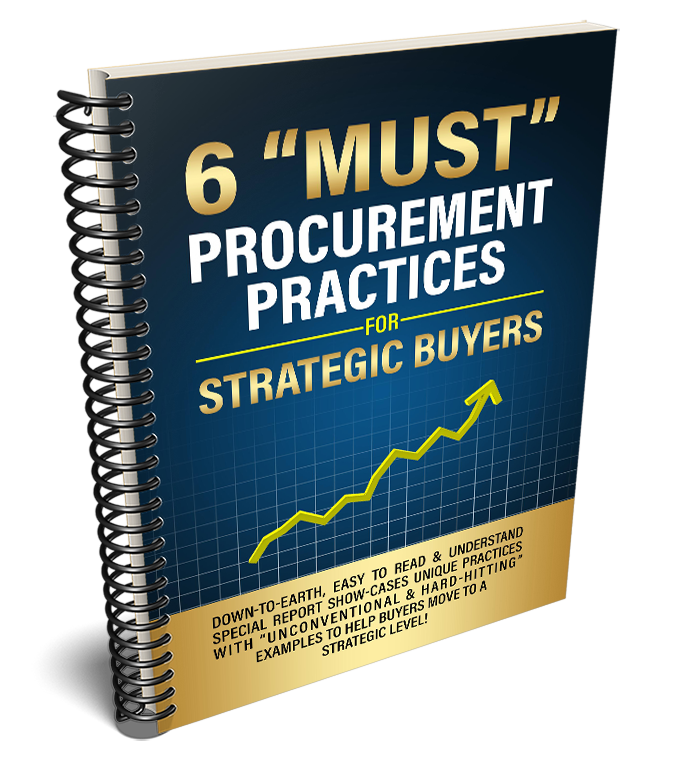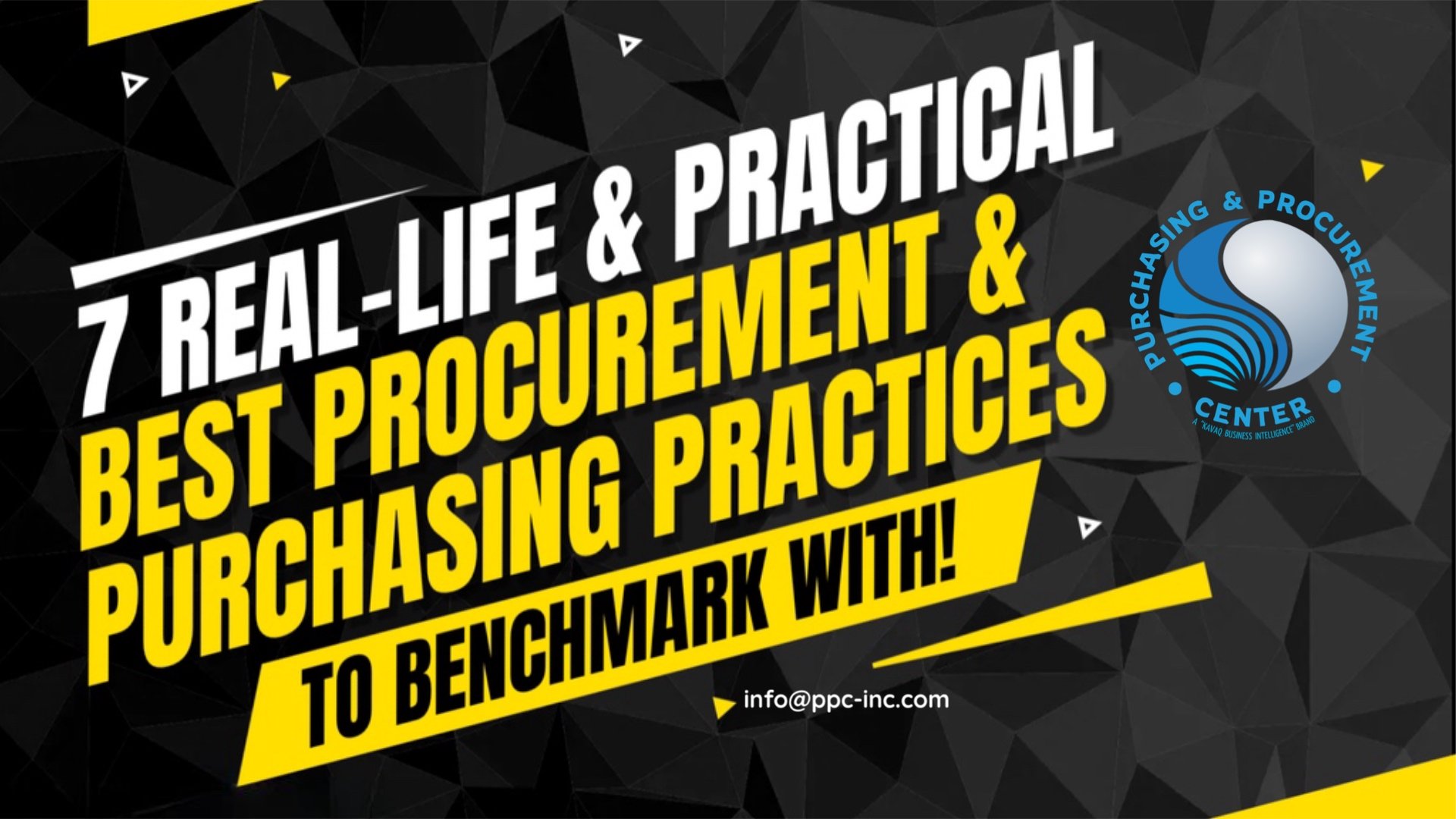
7 Real-Life & Practical Best Procurement & Purchasing Practices to Benchmark With!
Down-to-Earth, Easy to Read & Implement Best Procurement Practices For Strategic Buyers & Procurement Leaders to Move to a Strategic Level!
The 7 Best Procurement Practices below are 7 Imperatives that must be in the playbook of any procurement executive to implement so that to get full recognition & respect for procurement as a strategic unit that affects the bottom line & produces real savings with better supplier & internal stake-holder relationships.
7 Best Procurement Practices Summary:
- Implement Spend Profile/ABC Categorization!
- Maximize Supplier Relationships by Generating Real Power in the Leverage Quadrant!
- Price vs Total Cost of Ownership (TCO) or Both - When to Award on Price vs TCO?
- Cost Reduction vs Cost Avoidance Transparency!
- Negotiate Price & Another 30 Items Apart from Price!
- Use the Correct Contract Type Among the 3 Available!
- Train & Develop Procurement Staff on 10 Core Skills!
1. Implement Spend Profile/ABC Categorization
Before doing anything else at all, a strategic buyer starts with a spend profile analysis and gets rid of C’s and focuses on A suppliers. Yes, this is fundamental - but applying fundamentals consistently leads to success.
Here’s an image to illustrate this principle:
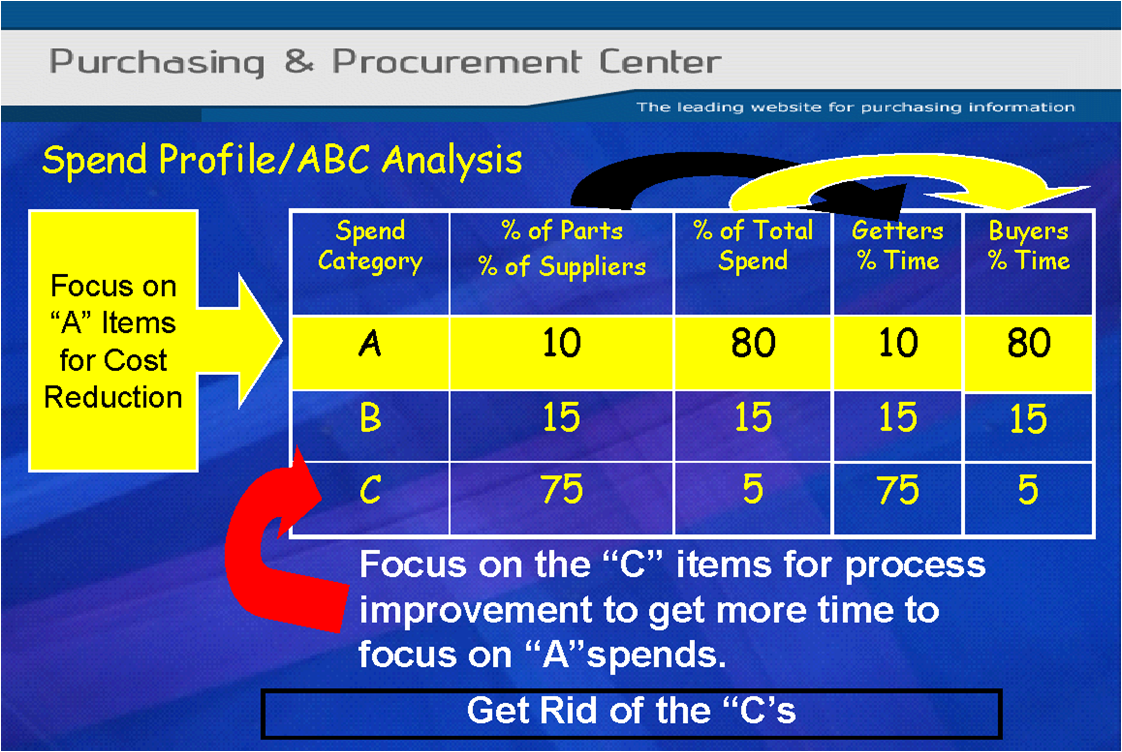
Getters focus their time equally among all suppliers, without realizing that they’re wasting their time by focusing 75% of the time with the suppliers that get only 5% of their business.
Strategic buyers not only understand that they must focus on A items/suppliers 80% of their time but also implement systems and processes on dealing with C items/suppliers, so that they get rid of time & effort wasted on Cs.
2. Leverage Supplier Relationships!
If you’ve been a while in procurement you probably are familiar with Kraljic Matrix.
In short, Kraljic matrix is used to segment suppliers of a company by dividing them into four classes, based on the complexity (or risk) of the supply market (such as monopoly situations, barriers to entry, technological innovation) and the importance of the suppliers (determined by the impact that they have on the profitability of the company). This subdivision allows the company to define the optimal purchasing strategies for each of the four types of suppliers - see image below for an illustration.
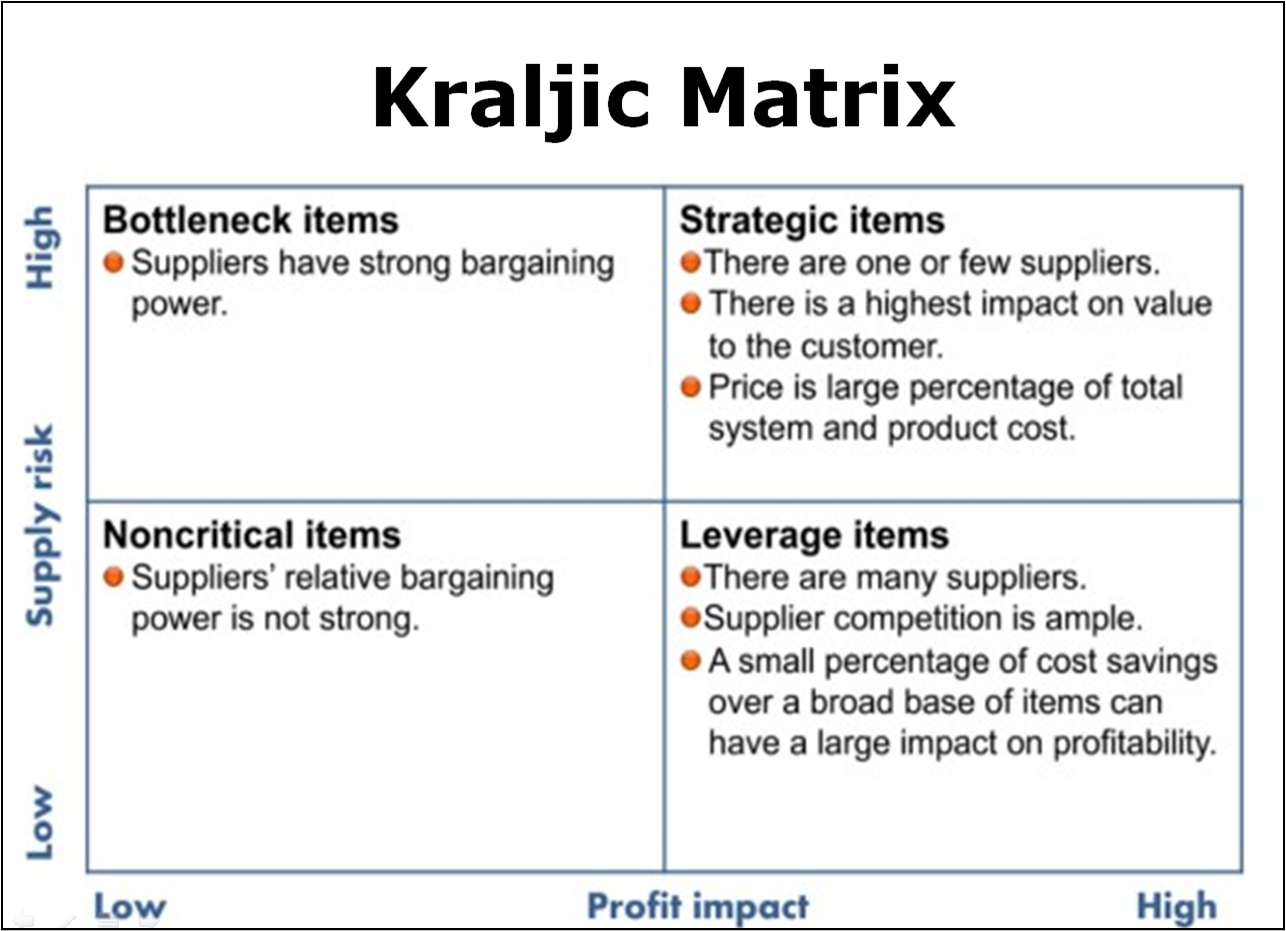
Generate Real Power in the Leverage Quadrant!
While it’s a common practice to encourage buyers to focus on Strategic Suppliers as a best procurement practice, this is not exactly correct. The better practice is to take suppliers from Routine/Non-Critical (R) & Strategic (S) quadrants and move them to Leverage for much better results related to cost savings and strategic relationship building - see illustration below.
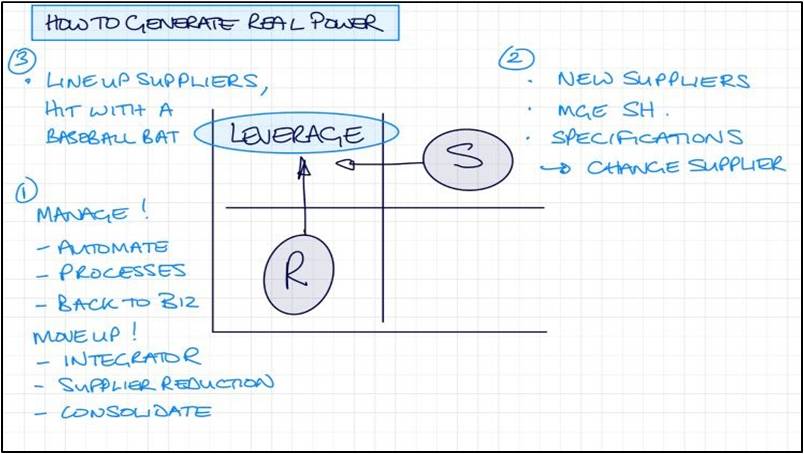
3. Price vs Total Cost of Ownership (TCO) or Both?
While almost everywhere you’d hear that purchases must be made based on Total Cost of Ownership it is not always so.
When to Award on Price!
For example certain commodities where there’s not much difference in terms of quality or after delivery service (e.g. stationeries & similar items), then buying at the lowest price is the right thing to do.
When to Award on TCO?
However when it comes to more sophisticated buying, a Total Cost of Ownership Model must be followed, where price is only one of the items being considered with others like warranties, training, service levels etc are given a rating to ensure that even if you’re buying at a higher price, the TCO is lower.
In such cases whatever you do, think before you ever award a contract with the principle of “3 bids and select the lowest bidder”!!!
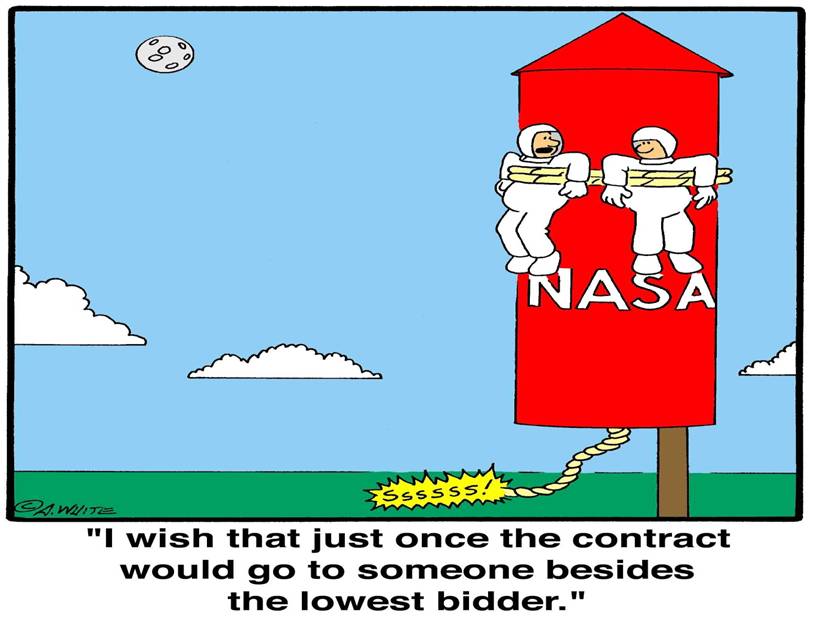
4. Cost Reduction vs Cost Avoidance Transparency!
While Cost Reduction directly affects the bottom line/profitability, cost avoidance does not. However cost avoidance helps to give credit to procurement for a job well done.
There have been many arguments between CFOs and CPOs/Procurement Directors as to what constitutes cost reduction vs cost avoidance. To avoid confusion, below is a quick definition of each with 3 examples. Use them internally to create transparency when capturing each.
Cost Reduction
A decrease from the last total price paid is a cost saving. Cost reductions have a direct dollar-for-dollar impact on the bottom line.
Cost Avoidance
An action by means of which certain material or services cost are not incurred. Cost avoidance does not lower the cost when measured against historical results, but it does minimize or avoid the negative impact on the bottom line that the original price or cost would have generated had not the avoidance occurred.
Examples of Cost Reduction vs Cost Avoidance
Cost Reduction
- Substituting one purchased item, material or service for another
- Changes in source of supply, such as changing to a new supplier for the same item or service
- Introduce or implement a new technology that eliminates an older less efficient technology
Cost Avoidance
- Buildups of Inventory in advance of price increase
- Negotiating a purchase price that is lower than the original quoted price for goods or services not previously purchased
- Avoiding a future cost increase by delaying or reducing the impact of proposed price increase
5. Negotiate Price & Beyond!
- Negotiate Suppliers Quotes
It is a best procurement practice to always negotiate the initial quotes offered by suppliers. It’s important to remember that a quote is not a concrete number but a price level at which the seller would like to do business.
It is just the starting point of most negotiations and a number that the seller feels can be supported at the start. A quote can be and usually is changed before an order is placed.
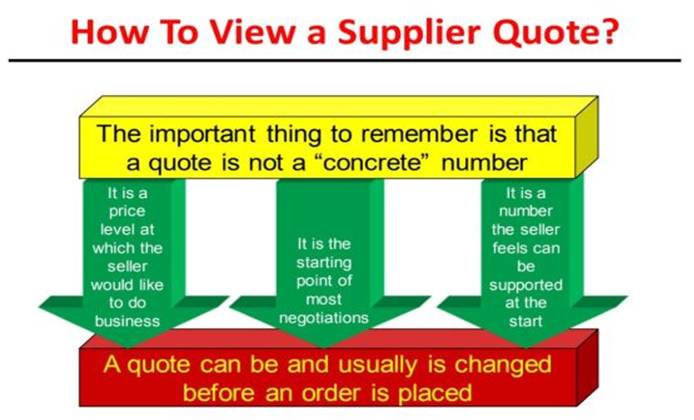
- Negotiate Other Items Apart from Price
On the other hand, the amateurs negotiate only the price. The Pros negotiate more than price including quantity, contract type, delivery, down-payment, installation etc. Below is an illustration of 30 items to negotiate apart from price.
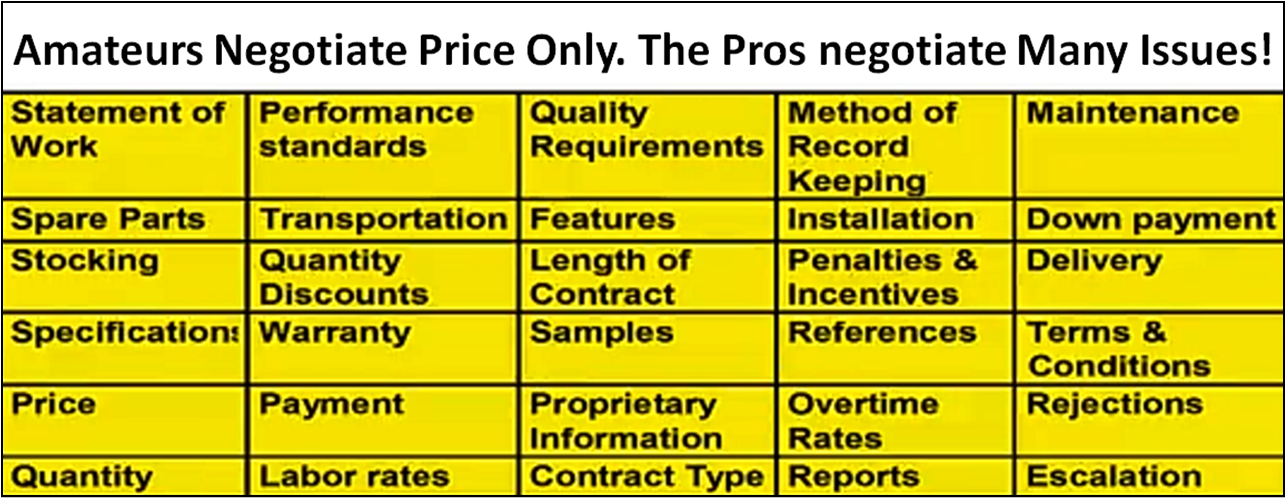
6. Using the Correct Contract Type!
As per best procurement practice no. 5 above, among the many items to negotiate apart from price is the contract type. As a general rule, whatever contract you award there must be clear reference to the PERFORMANCE/RESULT that you want the supplier to deliver.
There are 3 contract types based on the Statement of Work (SOW) & the last type is the preferred type of contract:
- Desing/Details SOWS
This tells the supplier how to do the work. The buyer, to a large degree requires the contractor to follow the buyer’s way of performing the task. This causes the risk of performance to be borne by the buyer unless the supplier is negligent.
- Level-of-Effort or Time & Material or Unit Rate SOWs
The real deliverable under this type of contract is an hour of work and the material required to perform the service, repair, development etc
- Performance/Result-Based SOWs
Generally this is the preferred method of stating the needs. A Performance Based SOW does not dictate how the work is to be accomplished. Results of the contractor’s effort can be measured in terms of performance, technical and quality achievement or cost performance.
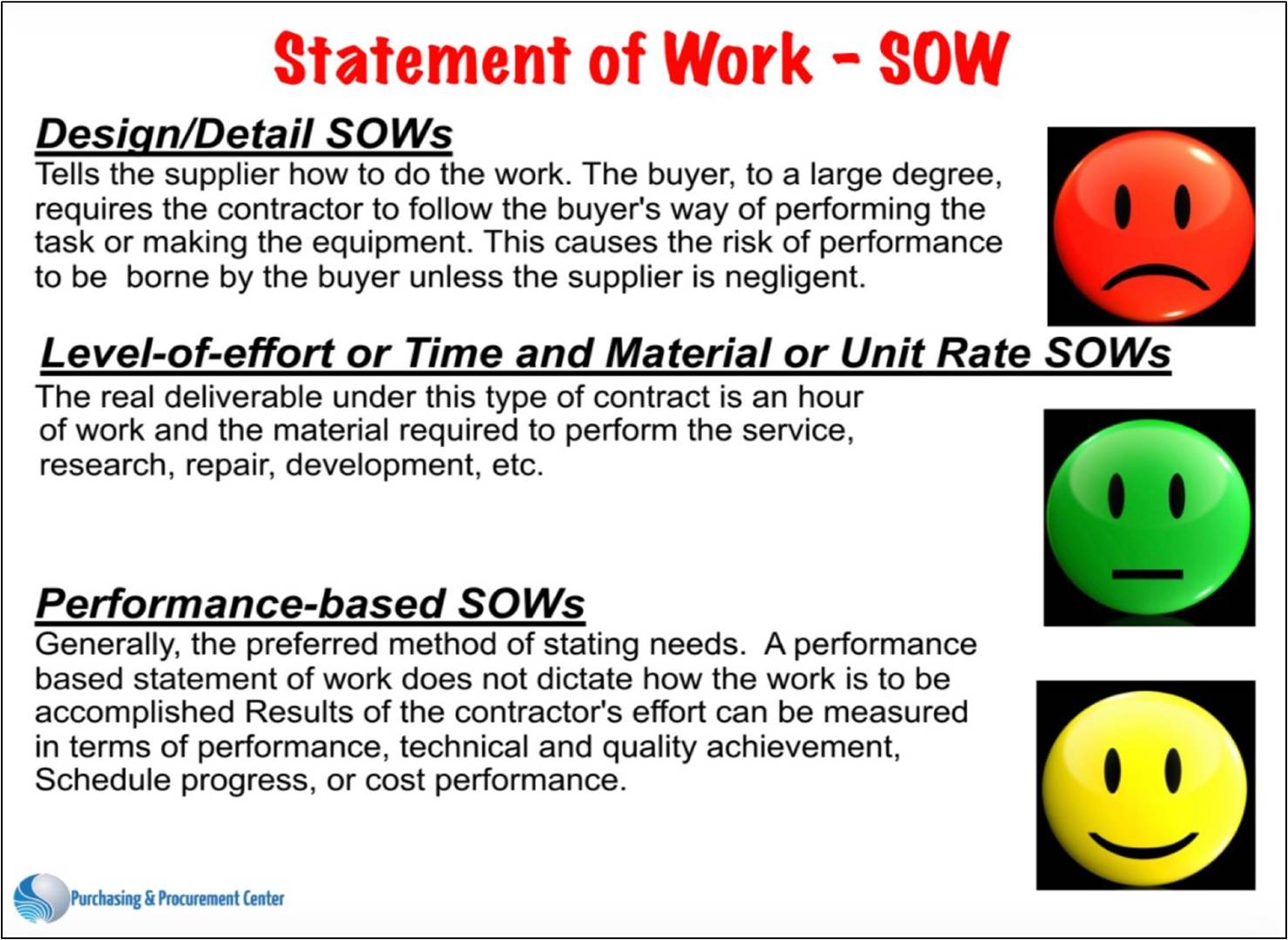
7. Train & Develop Procurement Staff!
Rarely mentioned as a best procurement practice, training is probably one of the most important as in many negotiations, procurement is outdone because the sellers/suppliers receive about 200 hours training a year, whereas procurement receives only about 25 hours training a year.
Don't Just Train Procurement Systems & Software!
Another thing is that many young professionals learn purchasing based primarily on the use of their organization’s procurement systems and software rather than learning the fundamentals of the purchasing process itself.
While these may be useful tools, they are no substitutes for the logical processes and foundational principles they execute.
Train Functional Competencies First!
As a Best Procurement Practice, training needs to be “functional” first - the type of development that focuses on making sure professionals are competent in their functional procurement skills & competencies, and later on other more general business and personal development skills.
Below is a sample competence framework of 10 functional skills that we use for our clients when training & developing procurement teams:
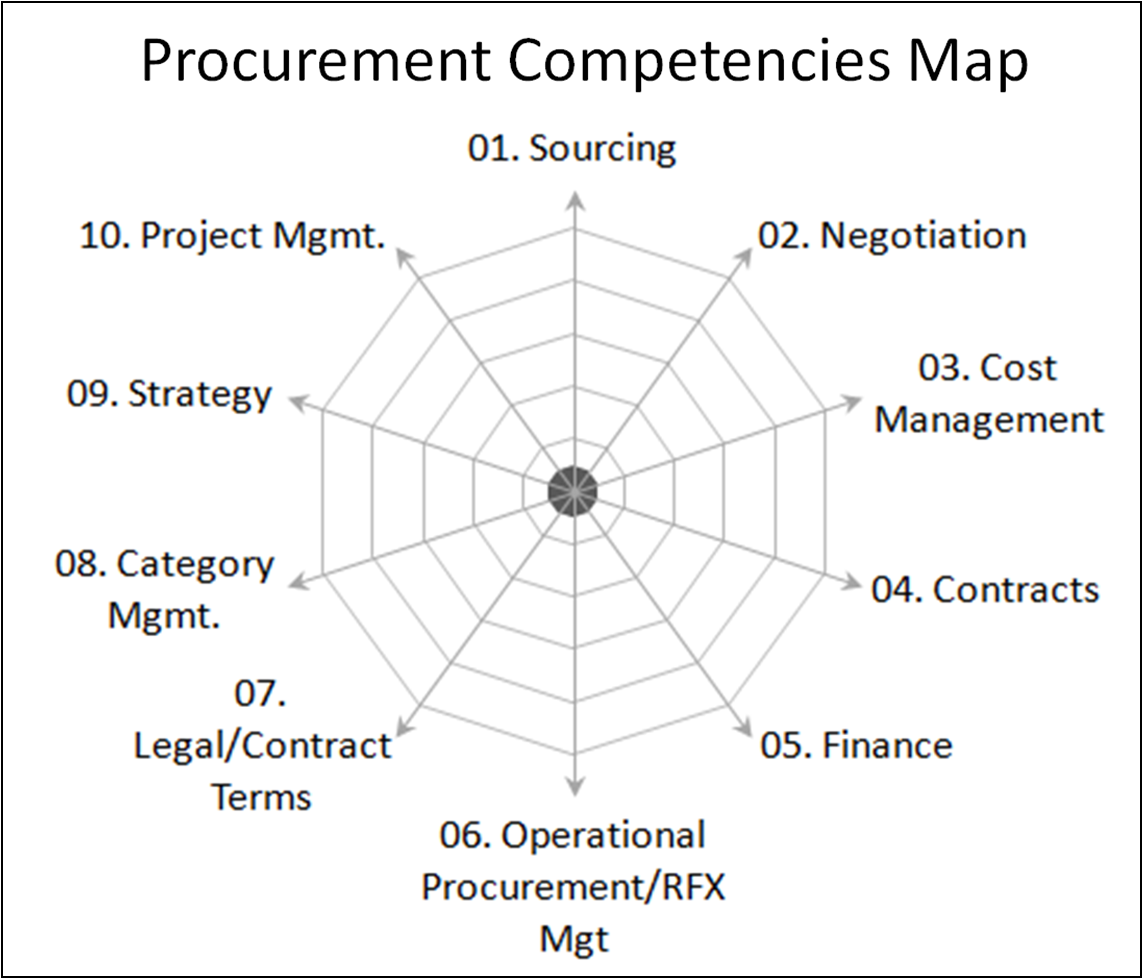
Want to Implement a Training Strategy for Your Procurement Team?
Let us help you & show how we have implemented structured & customized training programs for procurement teams when you book a call with us & schedule your free strategy session.
As training & development is a unique type of service, not all trainings are created equal. As a best practice to implement, ask suppliers for satisfaction ratings, participants testimonials & references.
Get Satisfaction Ratings, Testimonials & References!
If the satisfaction ratings are less than 80% eg less than 4 out of 5 or 8 out of 10, tread with caution.
Another practice to implement is the satisfaction guarantees, if not happy with the quality of the training given.
For example for satisfaction below 80%, a certain X% can be deducted from the training fees charged by the supplier. If below 70%, then deduct Y% and so on.
While the monetary aspect might not be as important, the psychological aspect is formidable. If the supplier agrees to this, then you’re dealing with someone who is confident of what they can deliver & not afraid to stand behind what they do.
These 7 best procurement practices will go a long way to help any procurement executive to benchmark their internal practices.
Download 6 Must Procurement Practices Special Report!
If you liked these 7 Best Procurement Practices, then you're going to want to download a copy of the Special Report “6 Must Procurement Practices for Strategic Buyers” which showcases Down-to-Earth, Easy to Read & Understand Practices with Unconventional & Hard-Hitting Examples to Help Buyers Move to a Strategic Level.

